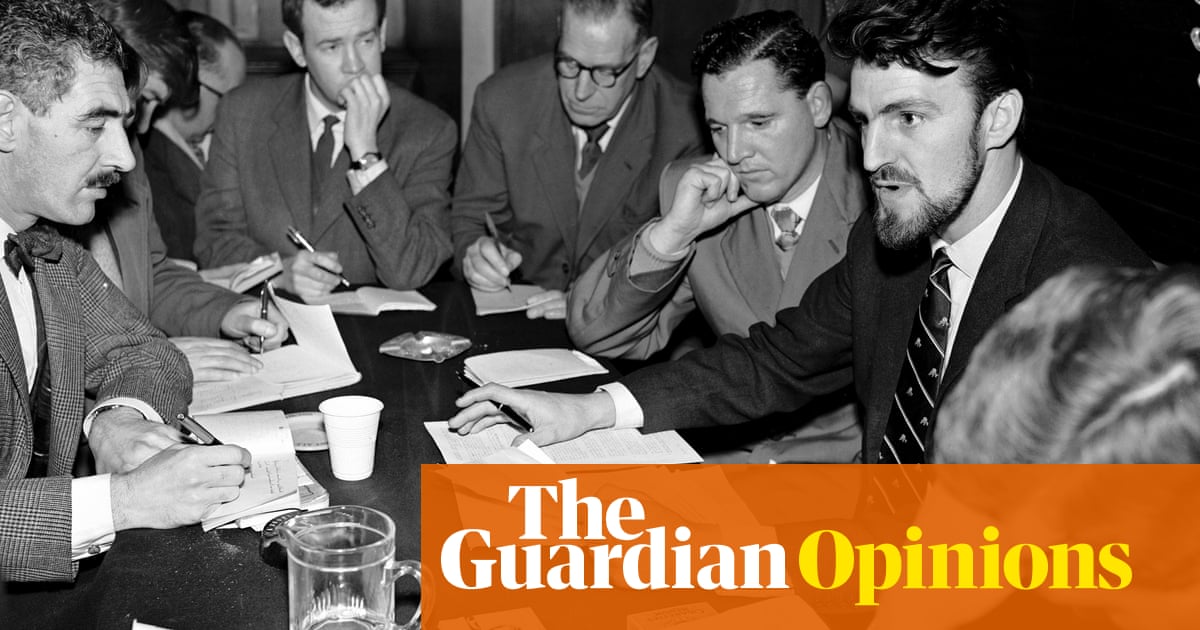The distant strains of The Internationale can be heard on the approach to the Etihad Stadium. Outside, partially obscured by banners and placards, Rodri and Erling Haaland are in high-vis jackets, gathering around a smouldering brazier for warmth. Locals arrive every few minutes bearing trays of hot tea and buttered scones. Passing motorists parp their horns in solidarity.
A chant goes up. “What do we want?” There is no reply for several seconds. Then a thin voice from the back of the huddle pipes up. “Um … maybe get rid of the Carabao Cup?”
Alas, this is where we must truncate our surreal vision of a footballing picket line. Sorry, folks: for all the suggestive headlines and bullish invective, this isn’t going to happen. Partly because the threat of strike action and actual strike action are radically different phenomena. Partly because any industrial action would almost certainly face a fearsome battery of legal challenges from competition organisers, sponsors and broadcasters.
But mostly because a strike requires three basic conditions: the means by which to organise and unite; a common, mass-appeal cause; and a sense of urgency or desperation. And on this scorecard, the Champions League footballers demanding less football are – by the most generous estimate – 0.5 out of three.
Actually, we can probably add a fourth category: a history or culture of collective action, an innate willingness to back up words with deeds. But for the most part, when you read about footballers going “on strike”, it isn’t really a strike at all. Rather, it is an attempt by an individual player to engineer a move to another club, usually to earn more money. What do we want? A silence. “We?”
Which strikes at the nub of why footballers – practitioners of the world’s most popular and lucrative sport – have proven so hard to unite. Take fixture congestion, a real and growing problem at the top end of the game. Not including training or travel, Julián Álvarez played 75 matches for club and country last season, Phil Foden 72. Rodri managed 63 but is likely to miss the rest of this season after getting injured at the weekend. But this is by definition an issue for players at the elite end of the game, on secure contracts, on the highest wages, negotiated by the world’s leading agents.
A recent study by the International Centre for Sports Studies found that only 0.31% of players featured in more than 60 games a season, less than 10% in more than 40. And unless the top players are planning to orchestrate their strike over a WhatsApp group, the only real instrument for collective action is through a union: the Professional Footballers Association in England and Wales, Fifpro globally. Which, by definition, means getting everyone on board.
At which point you run into a problem. Worker solidarity is by its very definition a rejection of the unfettered free market. And yet the same players talking about strike action have done exceedingly well from the unfettered free market. Lower down the pyramid are thousands of players reliant on appearance bonuses to top up their modest salaries, with no real objection to the volume of football being played. How do you square these wildly disparate interests, these wildly disparate life experiences?
But of course when players and coaches of elite clubs talk about fixture congestion, there is an unspoken subtext. They don’t mean cutting the Champions League or the Premier League, or the dizzying carousel of pre-season tours. What they really mean is FA Cup replays, the Carabao Cup, international friendlies. In other words, the genuinely redistributive bits of the football calendar, the bits that fund non-league clubs and lower-league clubs and the grassroots football. In the long-term this is probably the likeliest workaround: an agreement on maximum workloads and mandatory rest periods that miraculously allows the most lucrative competitions to continue unchecked.
And maybe this works for a lot of people. But let’s dream a little bigger. Often the reflexive refrain to star players complaining about workload is to take a wage cut, as if this were the only available pool of money in football. But what if footballers stopped haggling over things such as fixture calendars and rest windows? What if they used their collective power to challenge the financial pillars upon which the sport is built, to challenge owners who run clubs as investment vehicles and siphon off the profits?
A new financial settlement for the game, driven by the star power of the best footballers and buttressed by the sheer numbers of the rest, could be genuinely transformative. It could raise wages across the board, allow the National League midfielder to hire a personal nutritionist, allow the Women’s Super League winger to buy her own house. It could lobby governments and governing bodies. And it would have the clout to dictate the calendar, not simply complain about it.
This is a vision of the sport with the same money in it, but more fairly distributed, more cohesive and whole, more gender-balanced and more sustainable. At which point you run into another problem. If you’re the agent of an elite footballer, perhaps dozens of elite footballers, skimming off the cream from a game fat on its own avarice, what’s your advice here? Where do your own interests lie?
For decades, and pretty much from top to bottom, football has been a sport run on self-interest, tribalism, internal competition, personal acquisition. Wage inequality has gone through the roof. Wage competition is a feature of almost every dressing room. These are not bugs in the system; they are the system. A vision of capitalism where the unequal distribution of spoils is the whole point.
There is so much that can be achieved if footballers were prepared to act in concert. The Denmark men’s team refused a pay rise so their female counterparts could get rewarded equally. Collective action by women’s international players unlocked millions in bonuses from Fifa and an aspiration – although not yet a commitment – to equalising World Cup pay by 2026-27.
But this would require the top players to recognise that their struggle is also the struggle of others. That the £300,000-a-week megastar and the £300-a-week left-back getting changed in an unheated changing room are actually trapped in the same system of exploitation and disenfranchisement. That player solidarity can be more than a surreal reverie. We might get there eventually. But on current trends, it’s going to take a while.
-
Do you have an opinion on the issues raised in this article? If you would like to submit a response of up to 300 words by email to be considered for publication in our letters section, please click here.







